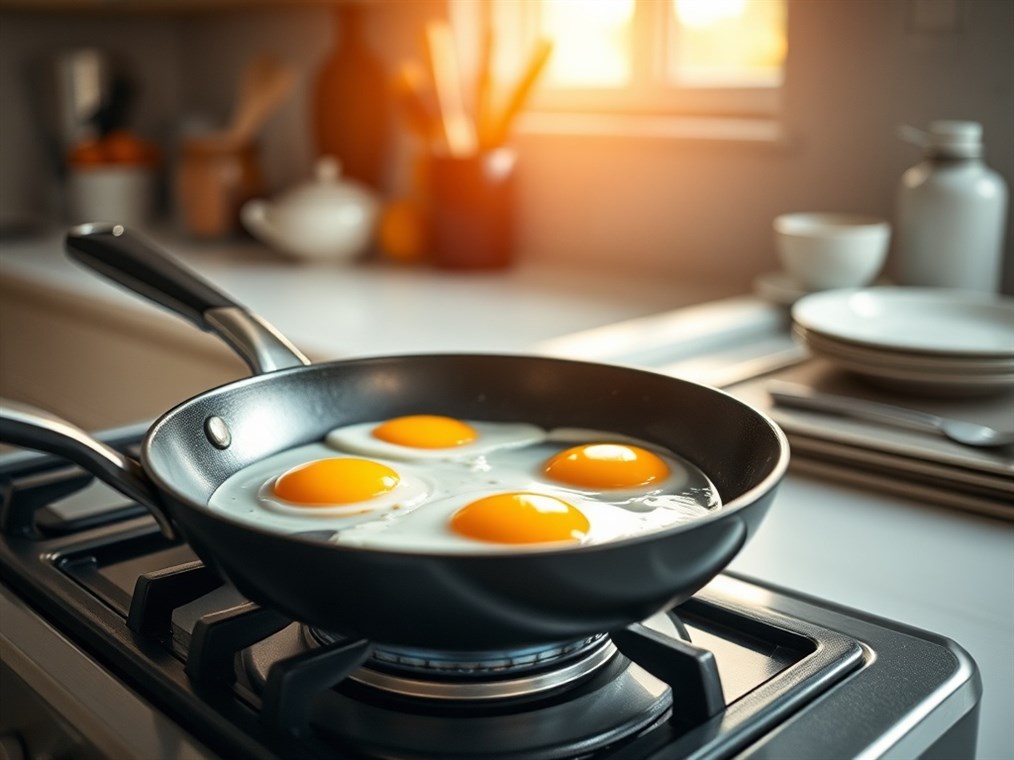Say Goodbye to Splatter: Your Guide to Frying Eggs the Easy Way
Frying an egg should be simple, right? But that unwelcome oil splatter can quickly turn a quick breakfast into a messy kitchen nightmare. Been there? I know I have! That’s why I put together this guide, packed with tips and tricks to help you achieve splatter-free fried eggs. Trust me, it’s easier than you think.
The Science of Splatter (Explained Simply)
Okay, let’s get a little science-y for a second, but I promise to keep it brief. Oil splatter happens when the water inside the egg meets the hot oil. Think of it like this: the water turns into steam super fast, expands, and basically explodes, taking hot oil along for the ride. Eggs, being mostly water, are prime splatter offenders.
The Secret Weapons for Splatter-Free Eggs
Alright, enough with the science. Let’s get to the good stuff – how to actually stop the splatter!
- Temperature is Key:
- Go Low and Slow: High heat is usually the main culprit. Instead of blasting the burner, dial it back to medium-low or medium. Sure, it takes a little longer, but it’s so worth it for a clean stovetop.
- Find the Sweet Spot: You want your pan hot enough to cook the egg, but not so hot that it erupts. Think “gentle sizzle,” not “volcanic eruption.” If you’re fancy and have a thermometer, aim for around 270°F to 310°F (132°C – 154°C). No thermometer? No problem! The butter test works like a charm: when a pat of butter melts and bubbles gently without browning too fast, you’re good to go.
- Prep Like a Pro:
- Dry Those Eggs! This is a game-changer. Crack your egg into a small bowl first. See that watery stuff? That’s extra albumin, and it’s splatter fuel. Ditch it!
- Dry Pan, Happy Pan: Make absolutely sure your pan is bone dry before you add any oil. Even a tiny drop of water will cause a mini-explosion.
- Less is More (Oil Edition): You only need enough oil or butter to lightly coat the pan. Think of it as a non-stick insurance policy, not a swimming pool.
- Water Works?
- I know it sounds weird, but some folks swear by frying eggs in water instead of oil! The trick is to pour a little water into the pan, bring it to a boil, and then add the egg.
- Another variation: add a splash of boiling water after the egg hits the pan, then cover it. The steam helps cook the top of the egg without any oily mess.
- Vinegar and Salt Alternative
- Try adding a spoonful of vinegar and salt to boiling water before adding the egg.
- The Cold Start Secret:
- I learned this one from Chef John Besh: rub a cold pan with butter, crack the egg in, and then turn the heat to low. It sounds crazy, but it works! The egg white cooks slowly and evenly, no splatter in sight.
- Pan Power:
- Non-Stick is Your Friend: Seriously, a good non-stick pan is worth its weight in gold. You’ll use less oil, and the egg will slide right out, no scraping (and no splatter!).
- Cast Iron and Steel Can Work Too: But they’re a little trickier. You’ll need to be extra careful with the temperature and use a bit more oil or butter to prevent sticking.
- Lid It!
- Popping a lid on the pan traps the steam and helps cook the top of the egg. This means you don’t need as much heat, which means…you guessed it…less splatter!
Busting Some Myths
- Crispy Edges Need High Heat: Nope! You can totally get slightly crispy edges at medium heat. Just keep a close eye on things.
- All Oils Are the Same: Not true! Some oils have more water than others. Using refined oils with higher smoke points can definitely help minimize splatter.
Splatter-Free Eggs: Step-by-Step
- Gather Your Gear: Grab your fresh eggs, a pat of butter (or a teaspoon of oil), salt, and pepper.
- Pan Prep: Choose your non-stick pan and make sure it’s clean and dry.
- Heat It Up (Gently): Place the pan over medium-low heat. Let it warm up gradually.
- Add the Fat: Toss in the butter or oil, swirling to coat the whole pan.
- Egg-cellent Entry: Crack the egg into a small bowl, ditch any extra watery albumin, and gently slide the egg into the pan.
- Cook It Just Right: Cover the pan if you want. Cook until the whites are set but the yolk is still gloriously runny (about 2-4 minutes).
- Season and Serve: Sprinkle with salt and pepper. Gently slide the egg onto a plate and enjoy!
The Bottom Line
Frying eggs without the oil explosion is totally doable. A little know-how, a bit of patience, and these simple techniques are all you need. So go forth and fry – without the fear of a greasy stovetop!

